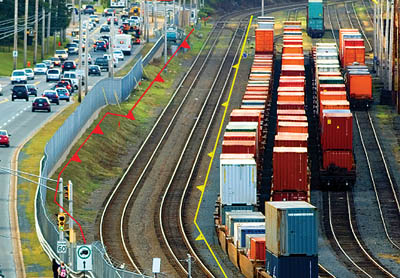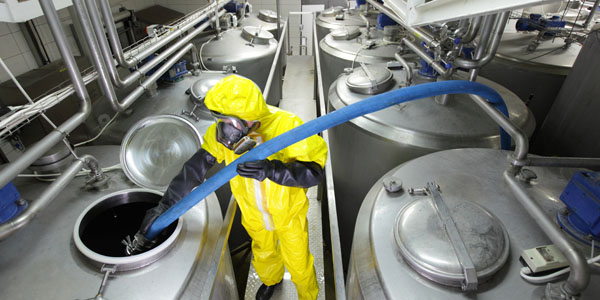For modern businesses and organisations, compliance is a critical element of day-to-day operations. Whether user have to be compliant with health and safety directives, industry codes of practice, standards or simply internal operational policies, the issue of ensuring compliance takes up time and resources. For integrators and end users, the ability to implement enhanced compliance monitoring and management can be a significant benefit and adds to the return on investment.
In today’s increasingly regulated world, compliance is a significant issue for many businesses and organisations. While the exists a necessity to ensure legislation, codes of practice and regulations are adhered to, company policies and procedures are correctly applied and standards are met, the actual monitoring, recording and management of compliance issues can represent a drain on time and resources.
As necessary as it is, compliance costs money, and with a growing emphasis on cost efficiencies across the commercial and industrial sectors, anything that can reduce the amount of time and/or resources dealing with compliance issues should be welcomed by the vast majority of end users.
For most businesses and organisations, there are two sides to compliance. The first is a case of ensuring the processes and procedures laid down for any given business – whether enshrined in legislation or regulations, or implemented by the company itself – ar adhered to. The second is to ensure that if an incident occurs, whether genuine or alleged, the business in question can provide evidence that it was fully compliant with any requirements and met its obligations with regard to duty of care, best practice and reasonable behaviour.
As the world becomes ever more litigious, this latter concern is one many businesses are having to address, especially where they are welcoming members of the public onto their sites. As a single example, the cost of spurious claims for slips, trips and falls not only includes compensation which needs to be paid if a case goes against the company, but also covers costs for legal services, investigation, administration, etc..
The mechanics of compliance
Compliance takes many forms, some prescribed by the relevant standards and directives. However, in the majority of cases the requirements of compliance hang upon the implementation of processes and procedures in specified circumstances.
First, there is a need to ensure that some type of action is taken when an event or incident occurs. Second, there will be a need to notify specified people of the situation and report details about the event and subsequent actions taken. Finally, the user will need to record that the action has been implemented, usually along with details of the event.
Compliance is often a key element of business procedures, as users will prescribe relevant actions to be taken for a range of alerts and events. In order to ensure the operators take the appropriate actions, a work-flow might be implemented which guides the operator through the processes, only allowing site status conditions to be cleared when the required actions have been taken.
While compliance can be a critical business element, few end users are aware a smart system can support compliance-based functionality, such as action automation, compliance monitoring and management of procedures.
The depth of flexibility available from many smart systems enables the creation of logic-based AND/OR rules which can be used to trigger actions or instigate automated procedures, either using connected equipment, other peripheral IoT edge devices or integrated systems and products from building management, IT, communications or process control systems.
Advanced reporting can also be used to create audit trails, and vital data can be shared via mobile devices or a cloud connection.
Compliance options
 There are three ways in which a smart system can deliver benefits with regard to compliance. These are the automation of actions and triggers, the creation of a real-time audit trail, and delivery of notifications and reports to members of the management team.
There are three ways in which a smart system can deliver benefits with regard to compliance. These are the automation of actions and triggers, the creation of a real-time audit trail, and delivery of notifications and reports to members of the management team.
Depending upon the needs of the business or organisation, smart systems can deliver any or all of these three benefits. Where rules-based event management is supported, additional criteria can be added to ensure filtering makes the delivery of actions more specific to changing demands.
Compliance often demands that specified actions are carried out or notifications delivered when certain events or incidents take place. On occasions these actions need to be instigated by a member of the relevant department, meaning an operator or member of the company’s personnel must follow a workflow to ensure compliance is met.
Not only does this mean staff must be trained about all aspects of the workflow, including any deviations which might occur based upon site status, but it also places pressure on operators and staff when an event occurs. Usually it is during an event or incident that staff are under the greatest amount of pressure and therefore more liable to forget a step which must be taken or make mistakes.
For many businesses and organisations, the real question is whether they’d prefer for system operators and other staff to focus on dealing with an incident or meeting compliance requirements. As important as compliance is, often the biggest priority is to address the situation. However, a smart system can allow the operator to focus on the incident by managing a number of the workflow steps.
For example, if a vehicle enters a prohibited area, the workflow might be that barriers or bollards in the location are closed to prevent further ingress, an audio warning is played and/or visible warnings are displayed, a notification is sent to the management team, details of the vehicle and its registration number are checked against a white list, all details of the incident are accurately recorded and the operator assesses what actions the driver takes to decide how to progress incident management. It’s a lot to do simultaneously whilst also managing the situation.
Using logic-based rules, the smart system can automate many of the steps, automatically closing barriers or bollards when a vehicle is detected in a prohibited area. This can also alleviate issues with an operator having to remember which zone the vehicle is in. Staff on larger sites or who are unfamiliar with a location might be forced to secure several locations to ensure the right one is locked down, whereas a smart system can target the area in which the incident has occurred.
 This makes actions faster and more accurate. The system can also ensure appropriate audio messages of visual displays are used, again only in the relevant area.
This makes actions faster and more accurate. The system can also ensure appropriate audio messages of visual displays are used, again only in the relevant area.
If the incident is considered high risk, the system could also change the status of other locations considered vulnerable, allowing them to better prepared should the situation escalate.
The actions can be carried out as soon as a vehicle is detected, and using ANPR software its details can be checked against a white list. If it has permission to be in a prohibited area, the incident can be cleared within seconds.
Actions could involve evacuating an area, playing a prerecorded message, switching lighting, opening or closing barriers, etc.. However, they might also be simpler building management tasks such as shutting down power on a floor or department, switching HVAC, directing a visitor to an appropriate parking space, displaying health and safety information, etc.. Because the processes are automated, the end user can be assured they will always take place when required.
Details of events and incidents are recorded, with a high amount of detail, in real-time. The system’s operational log will include information about the event and subsequent actions taken. This will include time, date, information about the event, the identification of the user who interacted with the system and the actions they specifically took if the processes are not automated. The log will also include information about alerts which were cleared by personnel.
If it becomes necessary to prove compliance, an authorised user can download the log, which is time-date stamped and often protected against changes.
Smart solutions can also offer flexibility when it comes to delivering notifications. Any professional system will support mobile devices and, increasingly, cloud connections. This makes it simpler for notifications to be sent to multiple users.
The recipients can be selected for alerts, ensuring that those in the relevant departments seeking compliance support can receive information only when it is relevant to their tasks. Additionally, cloud-based services allow data to be searched and shared without users having to interact with the core system.
This also makes it a quick and simple task to generate customisable reports. Authorised managers can access the data and create their own reports, freeing up operators to continue with site management tasks.
In summary
When it comes to compliance matters, AI-enabled smart systems offer comprehensive solutions to businesses and organisations. The AI technology allows the system to ‘learn’ about incidents and events which have compliance requirements, and allow operators to focus on incident management, creating a more efficient and effective working environment.


